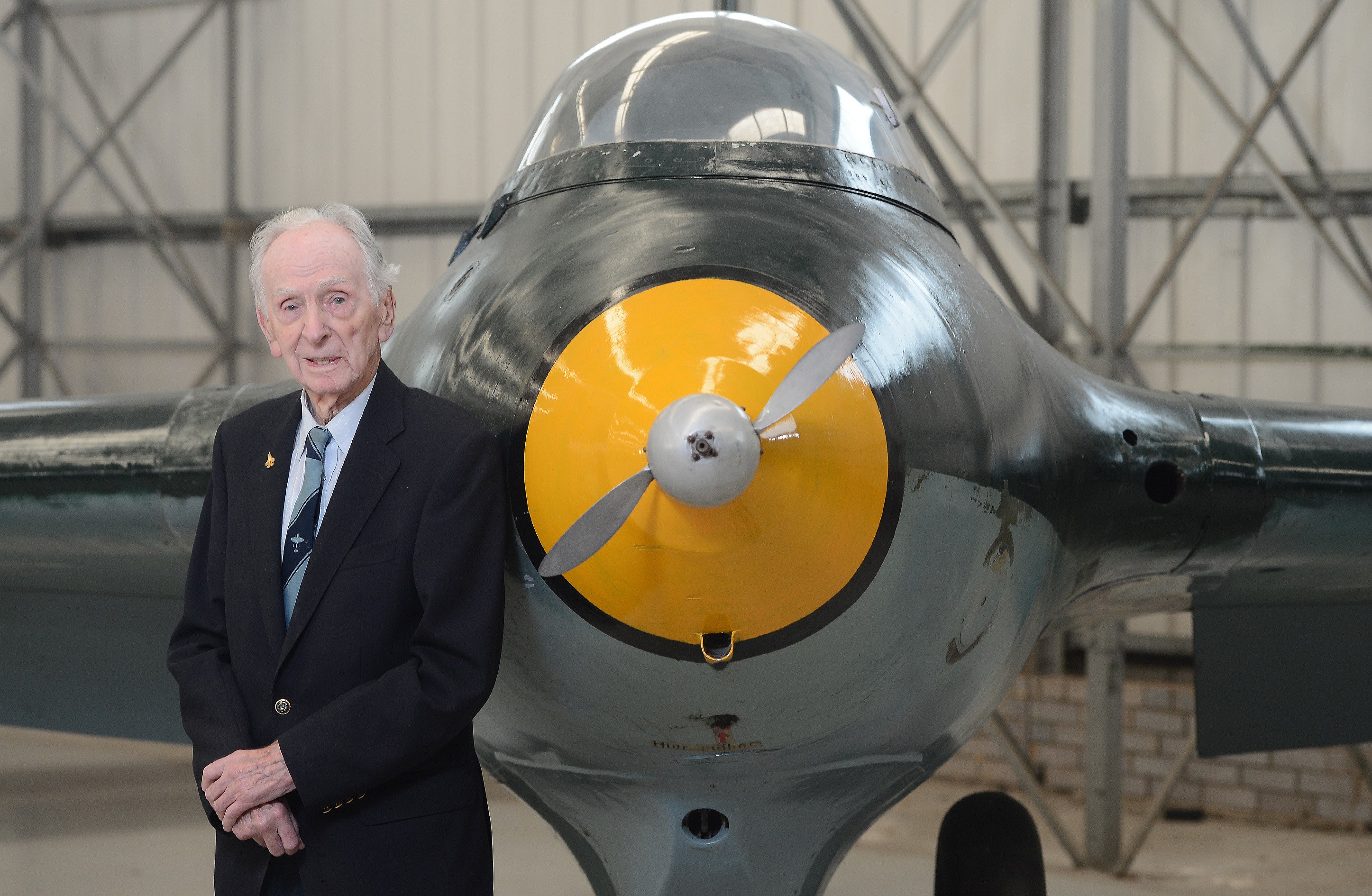Key in a search term below to search our website.
Key in a search term below to search our website.

Captain Eric Brown CBE – often referred to as Britain’s greatest ever pilot – was today [Thursday 10 September 2015] reunited with the Messerschmitt Me 163B-1a Komet at the National Museum of Flight in East Fortune, East Lothian, 70 years after he first flew the highly volatile aircraft.

Above: Captain Eric Brown © Neil Hanna.
The 96-year-old former Royal Navy test pilot visited the Museum as part of a £3.6 million redevelopment of two nationally significant Second World War hangars, which will incorporate interactive digital displays showing archive footage and interviews exploring the history, technology and personal stories behind each aircraft.
Captain Brown flew the infamous German aircraft on 10 June 1945 after capturing it at Husum, Schleswig Holstein, at the end of the war. Under instructions from Winston Churchill – who wanted to learn as much as possible about Germany’s technological weapons - he was part of a mission to travel to Germany, test rocket aircraft and bring them back to Britain.
Reaching speeds of up to 600mph, the Komet was the only rocket-powered fighter aircraft ever to have been operational and was the fastest aircraft of the Second World War. However the explosive rocket fuels powering the motor made it highly dangerous to fly. Pilots wore special rubber suits to protect themselves in the event that the fuel leaked; it was so corrosive that it would dissolve human flesh on contact. Despite the Komet’s incredible speed, it proved to be dangerous and ineffective in combat.
Following its capture at Husum, the National Museum of Flight’s Komet went to the College of Aeronautics at Cranfield in 1947. It was later refurbished and eventually donated to the Museum by Cranfield University. An interview with Captain Brown will be displayed on an interactive digital touch-screen alongside it when the redeveloped hangars open in spring 2016. The hangars will dramatically present military, commercial and leisure flight and will, for the first time, explore in detail the human stories linked to individual aircraft.
Born in Leith and now living in Sussex, Captain Brown is the Navy’s most decorated pilot, and has flown 487 different types of aircraft; more than anyone else in history. He has completed 2,407 aircraft carrier landings and has led an extraordinary life; he interrogated Hermann Göring and was one of the first British servicemen to arrive at the Bergen-Belsen concentration camp.
He was the subject of a 2014 BBC2 documentary Britain’s Greatest Pilot: The Extraordinary Story of Captain Winkle Brown. Today’s pilots are able to fly far more safely thanks to the techniques and technologies he helped to test.
Captain Eric Brown said:
“I was pleased to have the opportunity to see the Komet again, 70 years after I flew it. I was very determined to fly this rocket aircraft back in 1945 because to me it was the most exciting thing on the horizon, a totally new experience. I remember watching the ground crew very carefully before take-off, wondering if they thought they were waving goodbye to me forever or whether they thought this thing was going to return.
“The noise it made was absolutely thunderous, and it was like being in charge of a runaway train; everything changed so rapidly and I really had to have my wits about me. I had been used to the top fighters in the game with rates of climb of about 3,000 feet per minute, but this thing climbed at 16,000 feet per minute. The angle of climb was about 45 degrees and I couldn’t see the horizon. It was an incredibly volatile aircraft, and its operational record – just 16 kills and 10 aircraft lost in combat – made it, in my opinion, a tool of desperation.”
Steve McLean, General Manager at the National Museum of Flight said:
“An important element of the redevelopment at the National Museum of Flight is the opportunity to tell the human stories behind some of our aircraft using interactive digital displays. We were delighted to welcome Captain Eric Brown to the Museum to record the extraordinary story of his test flight in our Komet, and look forward to sharing that story with our visitors when the redevelopment opens in the spring.”